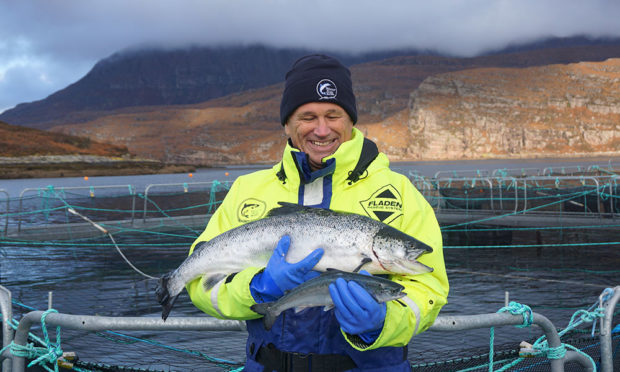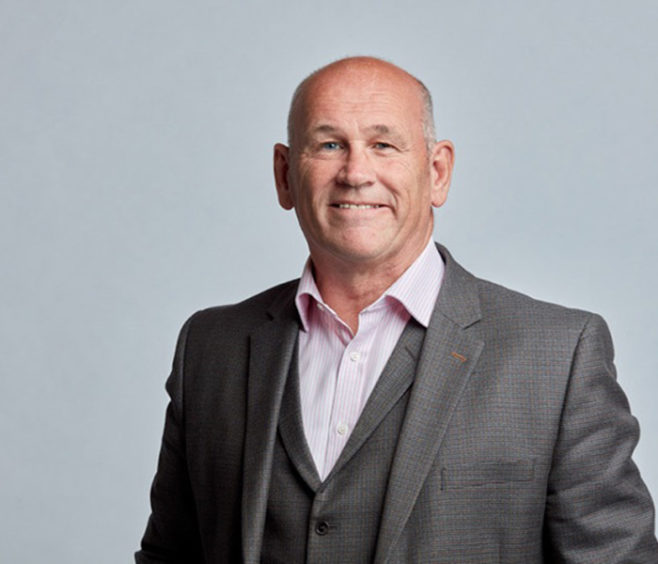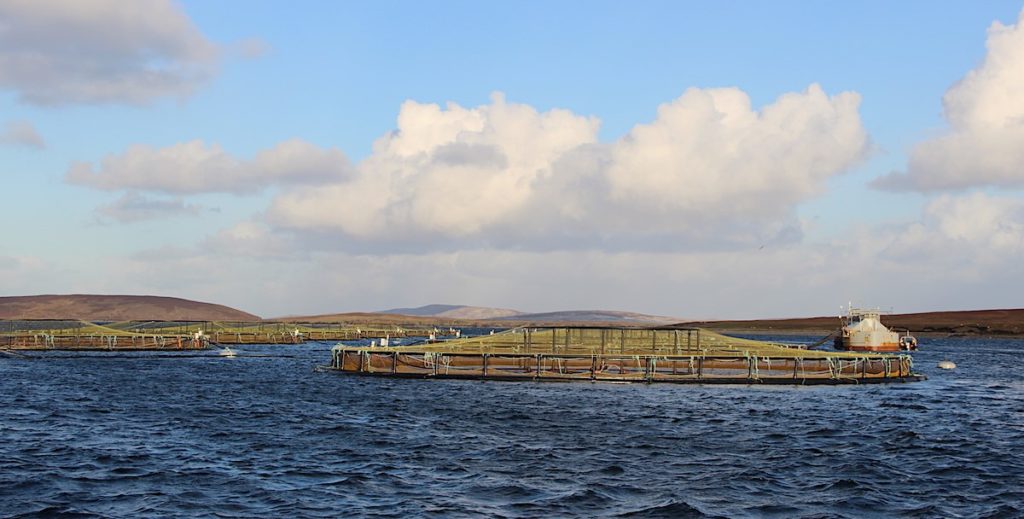
Scotland’s “hidden heroes” of the salmon farming sector can help the country recover from Covid-19. That’s a promise from the chair of the Scottish Salmon Producers’ Organisation, Atholl Duncan.
Like all of us, SSPO chief Atholl – who took on the role of being head of “the voice of the Scottish salmon sector” last year – had no idea what 2020 would bring in terms of the coronavirus striking, the effect it would have on the Scottish economy, or what would be required as we work towards a new normal.
A former reporter for The Sunday Post and previously head of news for BBC Scotland, Edinburgh-born Atholl enjoys a challenge and he has always been passionate about the Scottish business community. Now he is helping drive forward the Scottish salmon sector – which is the UK’s largest food exporter.
He said: “Scottish salmon is one of Scotland’s greatest global brands, whisky is the other. There is a huge opportunity in the sector going forward, we want to help rural and island communities and try to grow this global brand.”
Scottish salmon is in high demand across the world, particularly in the USA, France, and with the sushi chefs of Asia, with a staggering 50% of Scottish salmon going overseas. Plus, 10,000 people already work in the salmon sector, including 2,500 people on the farms. So when the coronavirus outbreak began, it had a massive impact on exports.
Atholl, who left his role at BBC Scotland news 10 years ago, explained: “When Covid hit, our first challenge was to look at the safety of the workforce as we couldn’t have as many staff looking after the fish. We had to keep the show on the road, as we still needed to keep food on the supermarket shelves. It was very difficult to get salmon to the States, for example, but we are starting to see it come back, although we are worried about second spikes.
“Fergus Ewing, the Scottish Government’s Cabinet Secretary for Rural Economy and Tourism, described the salmon farmers in Scotland as our ‘hidden heroes’ recently and they very much are.”
Almost six months on and the situation for the salmon farming sector has improved, as the global restaurant trade and international markets have started to reopen. Now the focus is on so-called green recovery (a government bid to cut emissions in heavy industry and drive economic recovery). This is something the salmon farming sector is already contributing to, explained Atholl.
“We are facing a very serious economic situation but we are using it as a great opportunity that Scotland needs to grab at this moment. It’s all about green recovery and how we [the Scottish salmon sector] can be part of it. How can we be more environmentally friendly? How can we grow this great Scottish brand? How can we create more jobs in rural and island communities and do it in a way where more funding goes back from the industry into these communities?”
Now, with his colleagues at SSPO, one of Atholl’s remits is to tell the positive stories of the salmon farming industry. Not enough people know about the sector’s successes, something that surprised him when he took on the role of chair.
“The biggest thing that struck me is that we need to be better at telling the success stories of the sector,” he said. “It’s not that we don’t need to improve – there’s more we can do – but there are two products from Scotland that you can get anywhere in the world, Scotch whisky and Scottish salmon. This is a huge opportunity here to grow an economic and environmental success story for Scotland.”
The opportunities for the salmon farming sector in terms of green recovery for Scotland are endless, especially in terms of its already-impressive carbon emissions and footprint.
Atholl revealed: “Salmon farming is a very low carbon way of producing food compared to beef, lamb and chicken. “One of the big stories going forward, about how we feed the world in the future, is that aquaculture has a huge role to play in how we do that.”
Interestingly, around 100,000 tonnes of Scottish salmon are exported across the world each year, but the total footprint is very small – if all the salmon farm nets were joined together, it would cover a surface area no bigger than half the size of Edinburgh Airport!
And there are exciting environmentally-friendly plans afoot for offshore salmon farms, electric vehicles being used to transport fish, and projects that use fish waste as fertiliser and to power communities. These are being trialled at the moment.
How salmon farms are going green:
NOT A DROP WASTED
At its Barcaldine hatchery near Oban, Scottish Sea Farms (SSF) has developed environmentally friendly technologies that can transform nutrient-rich fish waste (faeces) into fertiliser for agricultural land. This enriches the soil and aids crop development. Phase two of SSF’s fish waste recycling plan is now under way.
HOT NEW IDEA
Meanwhile in the Outer Hebrides, the Scottish Salmon Company (SSC) is using fish waste from its processing plant (mixed with household/garden waste) on the Isle of Lewis to heat the Council’s Combined Heat & Power Plant, instead of going to landfill. It also produces hydrogen which will power a hybrid bin lorry in Lewis and Harris.
NET GAINS
At Mowi, seawater manager David MacGillivray, came up with an idea for “environets” on circular pens. These double nets allow one half to be lifted easily for cleaning naturally, reducing the need for chemicals, while the other half holds the fish. Its currently being trialled on fish farms.
You can find out more about Scottish salmon farming, its importance to rural communities, the Scottish economy and how it can contribute to the green recovery – as well as the health benefits of eating fresh farmed salmon – on the SSPO’s website by clicking here.

Enjoy the convenience of having The Sunday Post delivered as a digital ePaper straight to your smartphone, tablet or computer.
Subscribe for only £5.49 a month and enjoy all the benefits of the printed paper as a digital replica.
Subscribe
